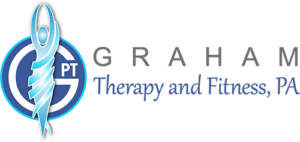Dance Conditioning Exercises: Boost Strength and Stamina

Why dance conditioning is key to enhancing your performance on the stage
As a dancer, you’re an artist–and your body is your chosen medium. To achieve the beautiful shapes and movements of a knock-out dance performance, you have to marry musicality and artistry with physical strength and stamina. One of the best ways to achieve this is through a dedicated dance conditioning program.
While dancing itself is a great workout, a good dance conditioning program can boost your performance to the next level–while also helping to prevent injuries. However, it’s important that the program addresses a dancer’s unique needs.
At Graham Therapy and Fitness, we can help you develop a tailored dance conditioning program that considers your current physical strengths and impairments, your chosen style of dance, and your specific goals. No matter what sort of dancer you are, we’ll help you strengthen your muscles, build your cardiovascular endurance, and increase your flexibility!
Curious about what sorts of conditioning exercises work great for dancers? Keep reading–or give us a call to schedule an appointment!
The Goals of Dance Conditioning
Conditioning for dance, as with any athletic endeavor, is focused on two things:
- Improving your performance on the stage or dance floor
- Reducing your risk of dance-related injury
For this reason, it’s important to put some thought into developing a conditioning program. You don’t want to exercise “just because.” You want to exercise with carefully considered goals in mind. This might mean improving certain skills (such as more powerful jumps) or dancing a full performance without getting out of breath.
It also means designing your workouts to help minimize your risk of dance injury. By strengthening your muscles outside of dance class, you work them in ways they aren’t used to, reducing the likelihood of developing a repetitive-use injury.
In short, a good conditioning program allows you to be a well-rounded dancer and athlete.
Exercises that Address A Dancer’s Unique Needs
What movements do you absolutely dread doing in dance class? Double or triple pirouettes? High-flying jumps? Slow and steady leg extensions? Now ask yourself–why do you dread those movements?
In all likelihood, it’s because they’re challenging for you. While practicing the movements themselves will help, conditioning exercises take things a step further. Every movement in dance is driven by your body’s biomechanics. Understanding the mechanics of your favorite (or least favorite) dance moves will help you know which conditioning exercises will most benefit you.
Here are some of the areas of a dancer’s body that can benefit from targeted conditioning:
Core Muscles:
Your core muscles (the muscles of your back, abs, glutes, and hips) are hugely important in dance. They link your upper body to your lower body and play a major role in keeping you balanced while ensuring smooth, graceful movements as you leap, jump, and spin your way across the stage.
Core conditioning does not consist of doing a hundred sit-ups and calling it a day. Plank variations (including side plank variations), clamshells, leg beats, and glute bridges will be far more effective in helping you build core strength.
Lower Body:
It’s no secret that dancers need strong legs. Glute strength is key to powerful jumps–but also to higher leg extensions. You may be flexible enough to get your foot to your ear, but can you hold it there? If not, it’s time to start strength training!
Squats, deadlifts, and lunges are all excellent lower-body exercises. Adding extra resistance in the form of free weights or resistance bands will further help you develop your lower body strength. Nervous about weightlifting? Our physical therapists will show you the proper forms.
Feet and Ankles:
Strong, healthy feet are important for all dancers, but they’re crucial for ballet dancers, especially those dancing on pointe. Specialized dance exercises to both strengthen and stretch the muscles and ligaments of your feet, ankle, and calves will help you develop the strength and mobility required to look lighter than air.
Resistance band exercises are a great way to strengthen your feet, as are foot raises (ie, relevés) in both parallel and turned-out positions.
Cardiovascular Endurance:
So this isn’t a body part, but it’s still an important part of conditioning for any dancer. The greater your cardiovascular endurance, the longer you can dance without getting winded–which is crucial when performing on stage!
The key to building cardiovascular endurance is finding a form of aerobic exercise you enjoy. Running, swimming, riding a bike (whether outside or on a stationary bike), or spending time on the elliptical machine are all great choices. You might also consider dropping into cardio-dance classes like Zumba, especially if you find regular cardio workouts boring.
Let Us Help Design Your Dance Conditioning Program!
The physical therapists at Graham Therapy and Fitness are movement experts who understand the unique conditioning needs of dancers. We’ll help you develop a safe, effective program that meets your dance goals and minimizes your risk of injury. We’ll also ensure you’re performing all exercises correctly.
To get started, schedule an appointment at our Graham Therapy and Fitness physical therapy clinic today!
